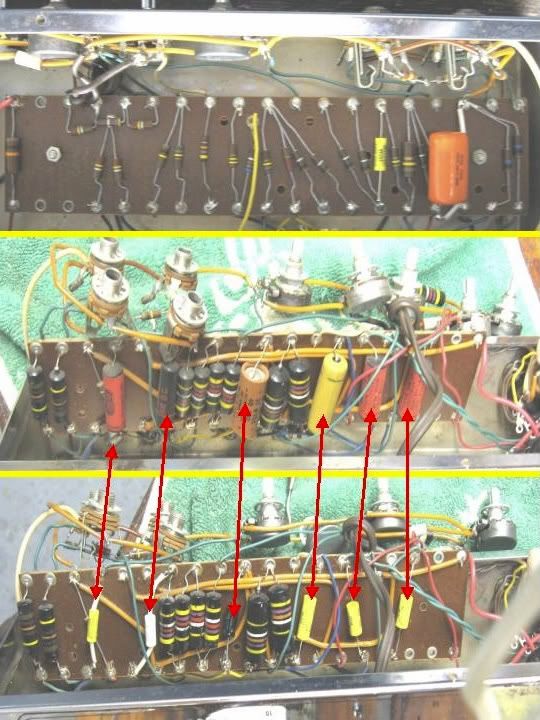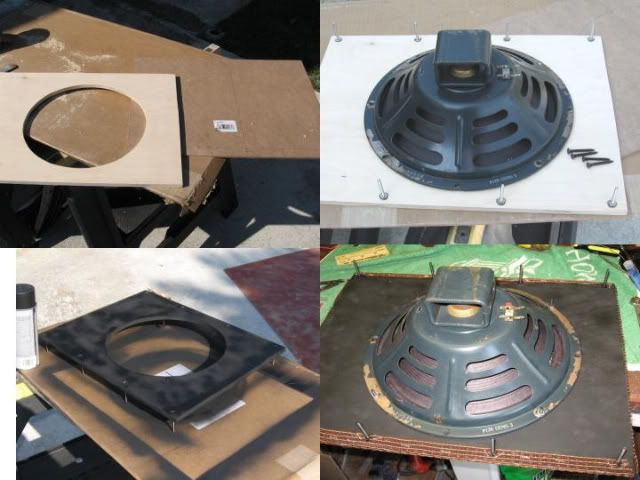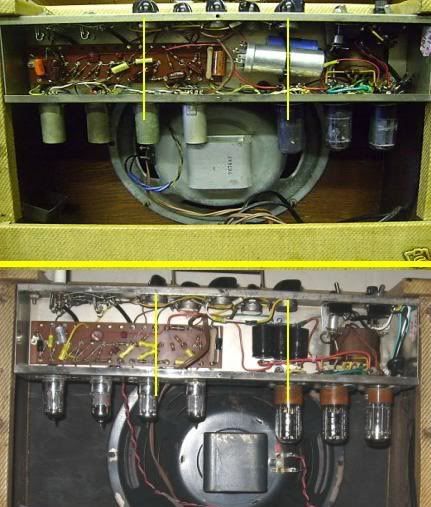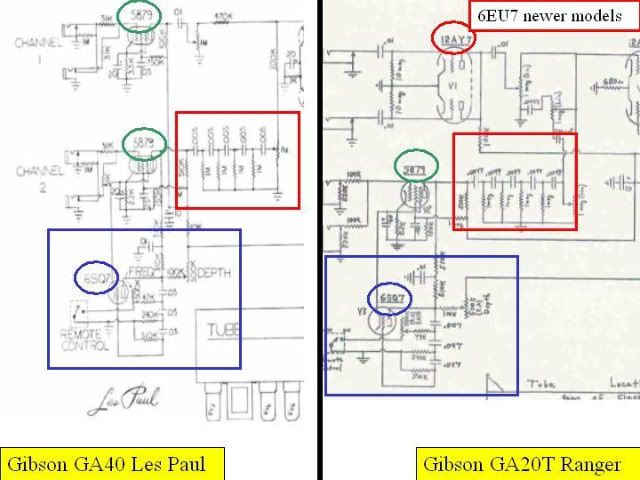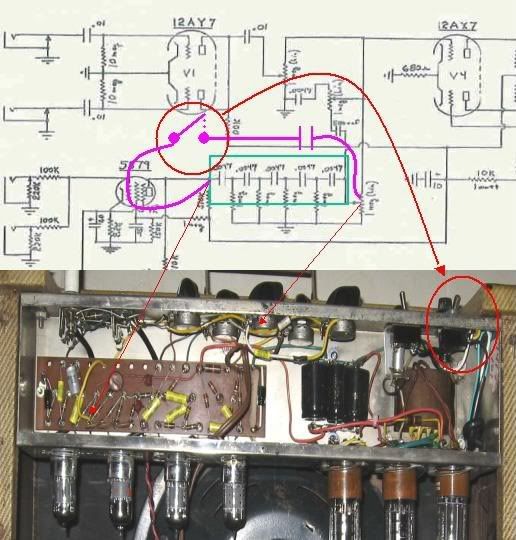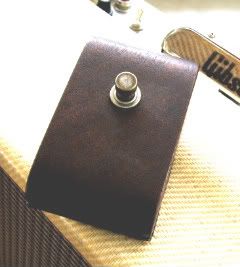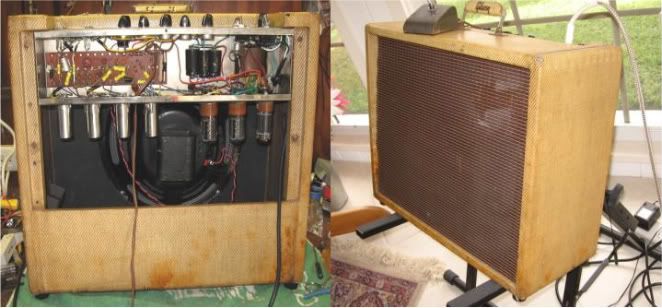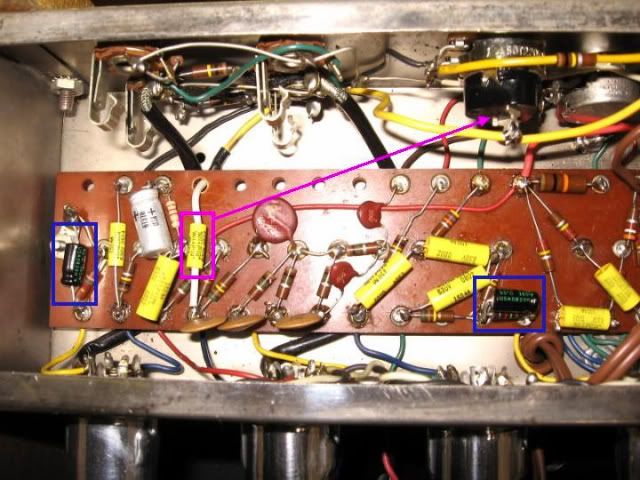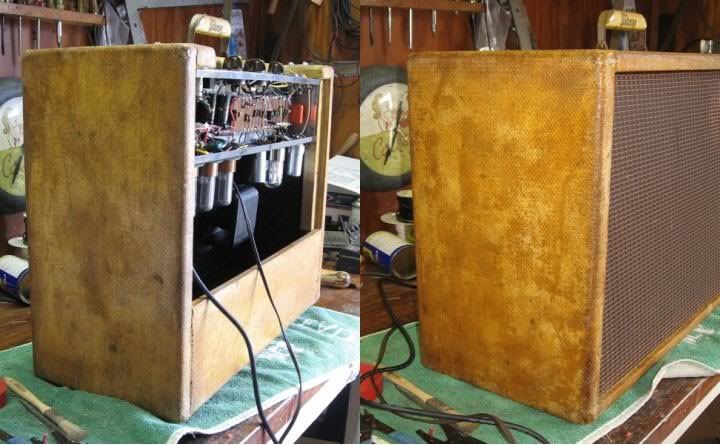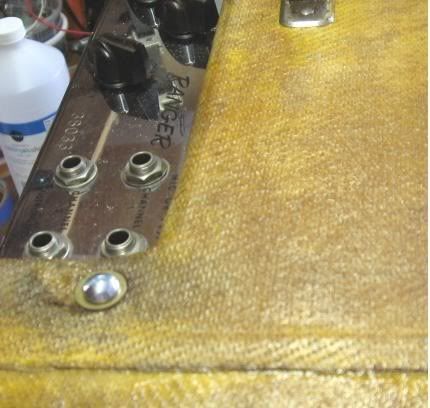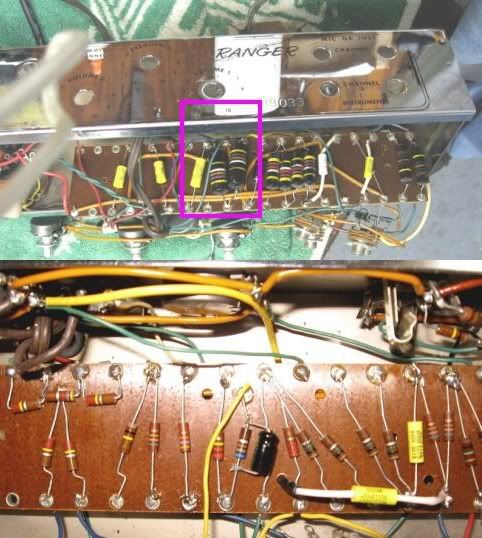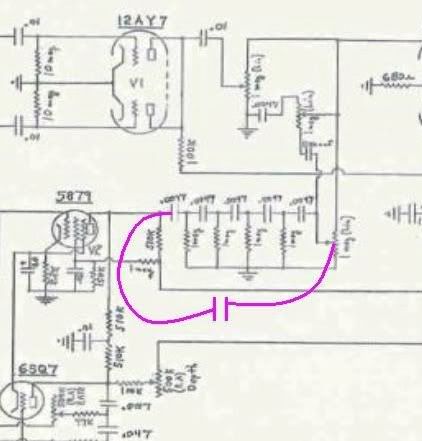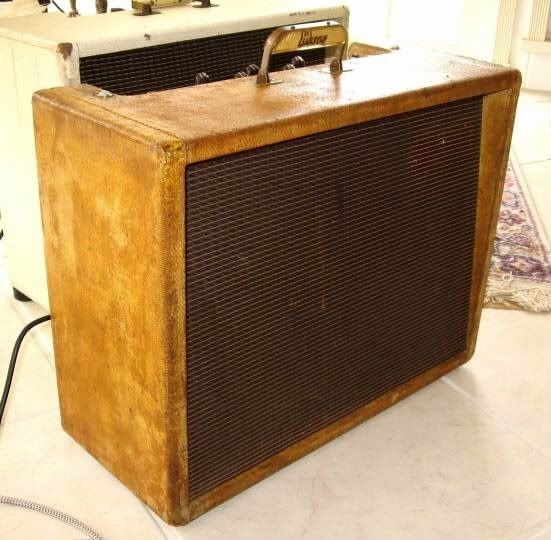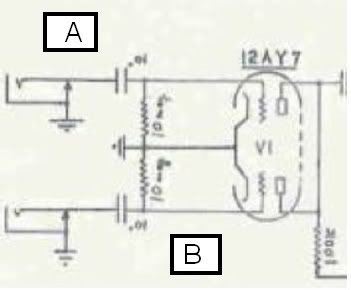"Let a Gibson amp be like a box of chocolates ...." Orville 'Forrest Gump' Gibson. My GA20 works pretty well, especially channel 2 with its 5879 which sets it and its big brother, the GA40 Les Paul apart from nearly every amp of the period (read more about the GA40 here). The public domain schematic indicates 12AY7, 5879, 6SQ7, and a 12AX7 in the preamp. However, the first GA20T I bought is fitted with 3 6EU7s and the critical 5879 in the preamp (thanks Orville); not the lineup listed above and the gap between the preamp and power tubes doesn't allow enough clearance for the bell of an alnico speaker (see lower half of pic below).

Because I prefer alnico speakers and wanted the same tube line up in Channel 2 as in the GA40, I bought another GA20T configured like the amp in the upper half of the picture above, including the 12AY7 in Channel 1 and a 12AU7 driver/ phase inverter and with the wider speaker gap. Fine ... except someone painted it medium gray/tan :evil: ... although it's complete with all five original Gibson ox-blood chickenheads:
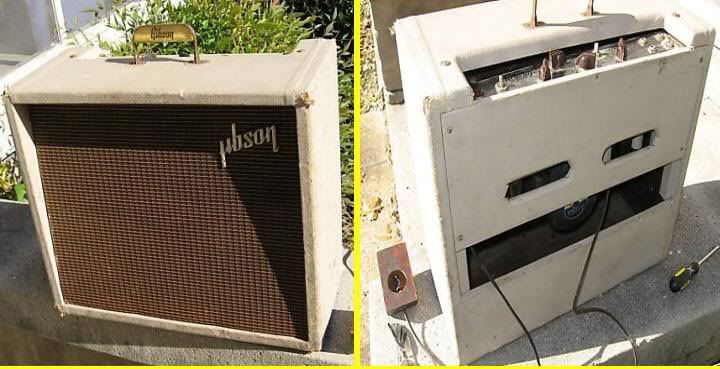
Included a Jensen P12R however the glue holding the cone in place failed; it's at a speaker shop in West Palm along with a 10" Jensen 'Viking' that our BBer RWood laid on me to address the shallow Silvertone 1481 cabinet:
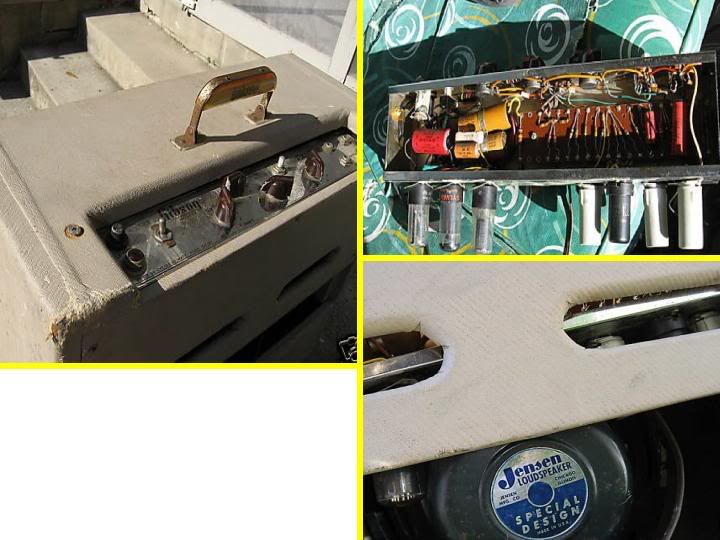
Upper left before stripping, lower left an idea of what it looked like before it was painted. Upper and lower right, after stripping with Strip-Ez and a coating or two of Easy-Off oven cleaner. Web buzz is that the Easy-Off is the way to go ... and it would have been for conventional tolex. On this amp, the vinyl topcoat on the tolex was gone; maybe taken off to enhance adhesion of the paint. Anyway, the stripped tolex is now nothing but cotton - no vinyl - the texture of fine burlap. Some of the tweed-colored weave still has some dye in it but the Strip-Ez doesn't distinguish between paint pigment and fabric dye.
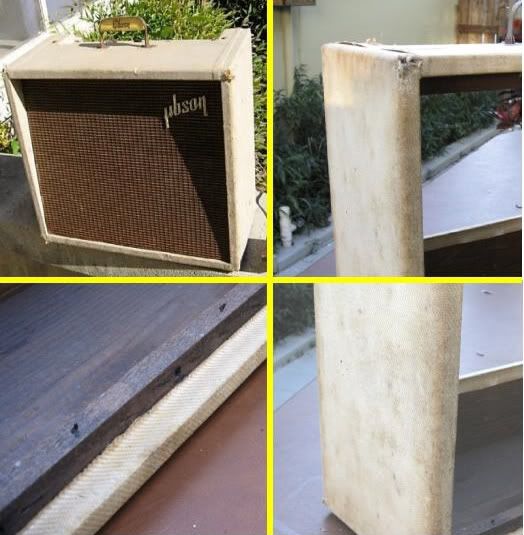
Progress on the new filter caps; same approach as the other GA20 - stabilizing wiring strips, dry fitting, and with soldered-in supply leads:
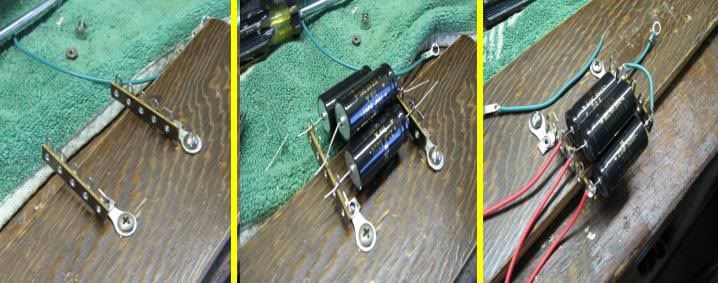
Filter caps in, primary and screen caps grounded separately from preamp filter cap IAW good practice. New cord at right:

Control panel: except for some crud just to the right of the on/off switch, really in pretty good shape; the silk-screening about 80% intact:
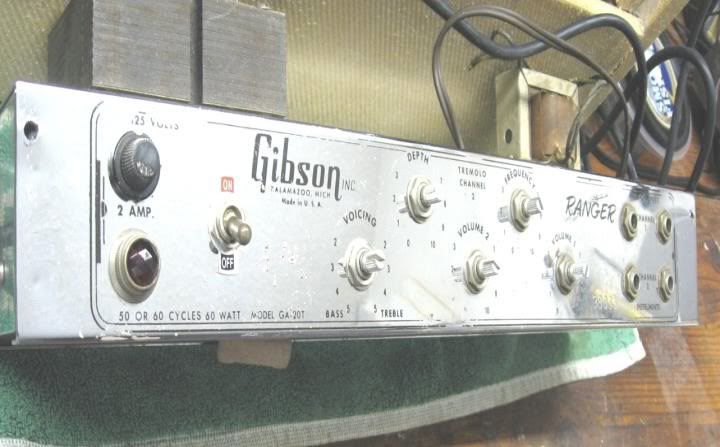
A little Forrest Gump twist on things; GA20T #2 has its signal, tremolo, and one of its cathode caps mounted on the underside of the circuit board (keep thieves from snipping them out ??? - seems Mesa Boogies are done the same way ... )the 5 pots and 4 jacks in the control panel will have to be loosened, and dropped out so the circuit board can be flipped over :evil: :evil: to get at the cathode and other caps. Replacing the cathode cap isn't elective but the others might be except that if I go to the trouble to replace the cathode cap ... and one of the others lets go ....
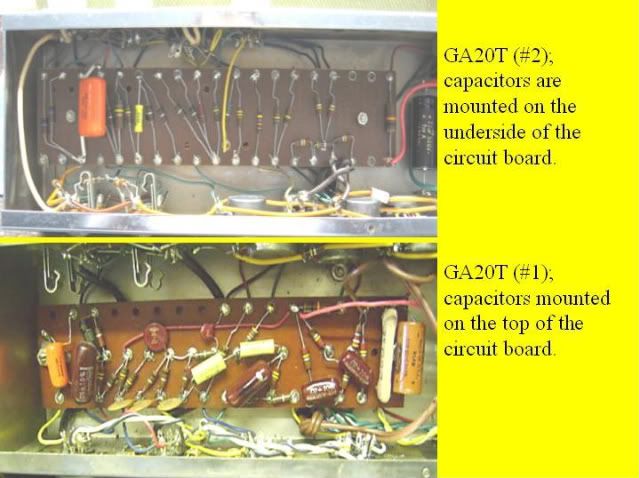
Why all the fuss? It's the 5879 ... Read more about it here.
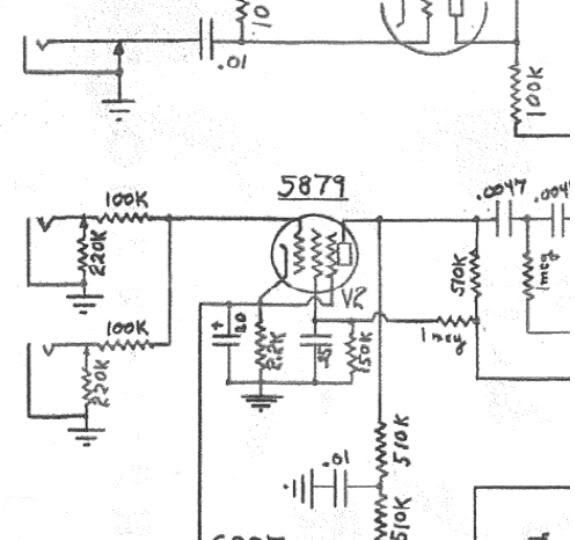

Because I prefer alnico speakers and wanted the same tube line up in Channel 2 as in the GA40, I bought another GA20T configured like the amp in the upper half of the picture above, including the 12AY7 in Channel 1 and a 12AU7 driver/ phase inverter and with the wider speaker gap. Fine ... except someone painted it medium gray/tan :evil: ... although it's complete with all five original Gibson ox-blood chickenheads:

Included a Jensen P12R however the glue holding the cone in place failed; it's at a speaker shop in West Palm along with a 10" Jensen 'Viking' that our BBer RWood laid on me to address the shallow Silvertone 1481 cabinet:

Upper left before stripping, lower left an idea of what it looked like before it was painted. Upper and lower right, after stripping with Strip-Ez and a coating or two of Easy-Off oven cleaner. Web buzz is that the Easy-Off is the way to go ... and it would have been for conventional tolex. On this amp, the vinyl topcoat on the tolex was gone; maybe taken off to enhance adhesion of the paint. Anyway, the stripped tolex is now nothing but cotton - no vinyl - the texture of fine burlap. Some of the tweed-colored weave still has some dye in it but the Strip-Ez doesn't distinguish between paint pigment and fabric dye.

Progress on the new filter caps; same approach as the other GA20 - stabilizing wiring strips, dry fitting, and with soldered-in supply leads:

Filter caps in, primary and screen caps grounded separately from preamp filter cap IAW good practice. New cord at right:

Control panel: except for some crud just to the right of the on/off switch, really in pretty good shape; the silk-screening about 80% intact:

A little Forrest Gump twist on things; GA20T #2 has its signal, tremolo, and one of its cathode caps mounted on the underside of the circuit board (keep thieves from snipping them out ??? - seems Mesa Boogies are done the same way ... )the 5 pots and 4 jacks in the control panel will have to be loosened, and dropped out so the circuit board can be flipped over :evil: :evil: to get at the cathode and other caps. Replacing the cathode cap isn't elective but the others might be except that if I go to the trouble to replace the cathode cap ... and one of the others lets go ....

Why all the fuss? It's the 5879 ... Read more about it here.

